Hyperlipidemia (High Cholesterol)
Overview
Hyperlipidemia, also known as high cholesterol, is a medical condition characterized by abnormally high levels of lipids (fats) in the blood. These lipids include cholesterol and triglycerides. Hyperlipemia can contribute to the development of various cardiovascular and metabolic disorders, including atherosclerosis (hardening and narrowing of the arteries), heart disease, and pancreatitis.
Signs and Symptoms of Hyperlipemia:
Hyperlipemia itself does not typically cause noticeable symptoms. In most cases, it is identified through blood tests conducted during routine check-ups or when investigating other health issues. However, the elevated lipid levels can lead to symptoms and complications related to the conditions it predisposes to, such as:
Chest Pain: High cholesterol levels can contribute to the buildup of fatty deposits (plaques) in the arteries, increasing the risk of chest pain (angina) and heart attacks.
Stroke: When plaques rupture and block blood flow to the brain, it can result in a stroke.
Peripheral Artery Disease (PAD): Narrowing of arteries in the legs can cause pain, cramping, and poor circulation in the lower limbs.
Pancreatitis: Extremely high triglyceride levels can trigger acute pancreatitis, causing severe abdominal pain, nausea, vomiting, and fever.
Xanthomas: Fatty deposits may form under the skin, appearing as small, yellowish bumps or nodules.
Eye Symptoms: Yellowish deposits, called xanthelasma, can form on the eyelids.
Treatment of Hyperlipemia:
The management and treatment of hyperlipemia aim to reduce lipid levels in the blood, lower the risk of cardiovascular disease, and prevent complications. Treatment strategies include:
Dietary Changes:
Reducing saturated and trans fats in the diet.
Increasing dietary fiber.
Reducing dietary cholesterol intake.
Incorporating heart-healthy fats like those found in nuts, seeds, and fatty fish.
Maintaining a healthy body weight.
Physical Activity:
Regular physical activity, such as aerobic exercise, can help lower cholesterol and triglyceride levels.
Medications:
Statins: These drugs are commonly prescribed to lower LDL (low-density lipoprotein) cholesterol, also known as "bad" cholesterol.
Fibrates: These drugs are used to lower triglyceride levels and increase HDL (high-density lipoprotein) cholesterol, the "good" cholesterol.
Bile Acid Resins: These medications bind to bile acids in the digestive system, reducing the reabsorption of cholesterol.
Ezetimibe: This medication reduces the absorption of cholesterol from the diet.
PCSK9 Inhibitors: A newer class of medications that can lower LDL cholesterol levels in specific cases.
Lifestyle Modifications:
Smoking cessation, if applicable.
Limiting alcohol intake.
Managing diabetes and high blood pressure if they coexist with hyperlipemia.
Regular Monitoring: Routine blood tests are necessary to monitor lipid levels and adjust treatment as needed.
The specific treatment approach will depend on individual risk factors, the severity of hyperlipemia, and any coexisting health conditions. It's essential for individuals with hyperlipemia to work closely with their healthcare providers to develop a personalized treatment plan and make lifestyle changes to reduce their risk of cardiovascular events and other complications.
